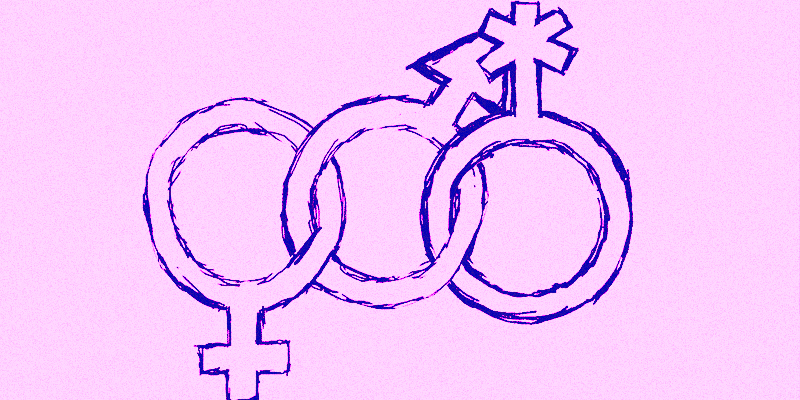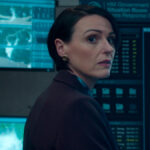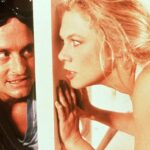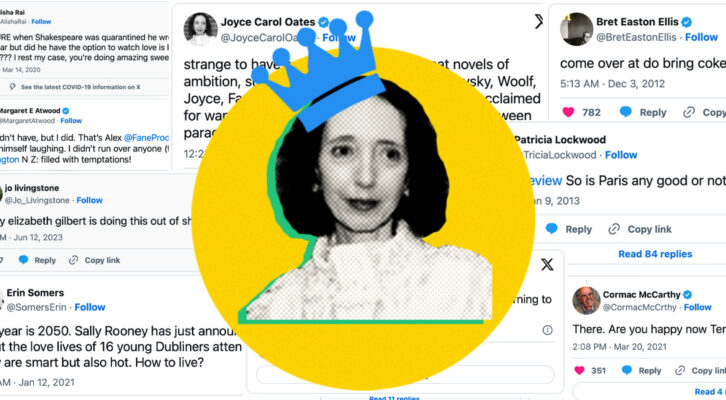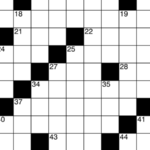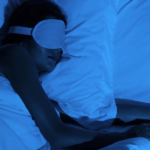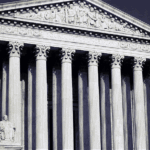Even as an “out” bisexual (truth: I had been once, but I wasn’t any longer), when I came up with the idea to write a novel about a bi, genderfluid bookbinder, I believed queer themes were off limits to me. I’d been married to a cisgender, heterosexual man for over a decade and had been presenting—to both the world and myself—as unmistakably female. I figured no one but a few good friends would even care to know my private feelings about who I was.
But through writing my forthcoming debut novel, Endpapers, I came to understand that I wasn’t being private; I was ignoring a part of myself that couldn’t be turned off simply because I wished it could. And surprisingly, it also revealed something I never fully understood about myself.
Until then, my bisexuality had never been a question. As soon as I was old enough to have a crush, I fell in love with both boys and girls. But when I got to college, the word bisexual was a revelation—a way to communicate who I was and find others who identified the same way.
In contrast, everything about me that could be considered masculine had always felt like a liability. It began in elementary school, when some kids thought the peach fuzz on my upper lip was hilarious and branded me with the humiliating nickname “Stache.”
When I came out as bi in college, I had short hair and worried I’d look too butch, so I overcompensated with ruffles and platform shoes. It was more than a year later that I joined my university’s LGBTQ+ Alliance and felt an urge for the first time to ditch the frills and embrace a more androgynous look. But one day a few well-meaning lesbian friends told me, with some amusement, that I was too femme to be butch. I didn’t think that was what I was trying to do, but I had no other way to understand it.
Soon after, I began dating my first girlfriend, and my newly won confidence was complicated again by the doubt of our gay friends who didn’t believe it would last—because inevitably I’d leave her for a man. As much as I longed to prove them wrong, deep down I was still hung up on a guy (a bi, gender-bending guy) I’d dated earlier. I assumed it meant they were right. I was neither butch nor queer enough.
The truth is I was also scared. Sometimes when I hung out with my girlfriend, all I could see were the difficult years that would surely lie ahead if we dared to make a life together.
After we broke up, I briefly dated a woman whose gender I couldn’t pin down. She was beautiful, with short blonde hair and long bangs that hung into her eyes when they weren’t tucked under a baseball cap. I didn’t think of her as butch, but she moved through the world with a swagger, and in her jeans and cap, even in the bright lights of a diner, she elicited flirty smiles from straight women who thought she was a pretty man. Of course, they were right. And wrong. It confused and excited me. But ultimately it scared me. Did I want to be like her? Once again, I ran away before I could find out.
When I graduated college, believing I’d failed at being queer, I embraced femininity. I stopped dating women, even though sometimes I worried it was a terrible mistake. Guiltily, I longed for the mainstream life a queer woman wasn’t supposed to want.
Then I fell in love with the man who would become my husband. We’d been friends in college. He’d known I was bi. He’d known me when I had shaved purple hair and wore overalls. He accepted and loved me and made me feel seen.
Fast forward to my early forties. In my mind I’d been out for decades. But I was still happily married to this man, and most of the people I’d been out to were no longer in my life. I still had a copy of Jack Halberstam’s Female Masculinity on my bookshelf, but it was only collecting dust.
Did it even matter that I was bi? And was it even true if I’d married a man?
As time has passed and queer and transgender rights have continually come under attack and trans people, especially people of color, have continued to be targets of violence and murder, I’ve decided the answers are yes and yes. And I’ve yearned to be visible again—both so that I can stop denying who I am and to be a true ally, to demonstrate that people everywhere may have queer friends and family members who they love and support, even if they don’t know it.
So one day I mustered the courage to sit down and write about a bisexual character who doesn’t fit neatly into categories of female or male. The problem was I didn’t really understand why I was still so interested in gender, so I struggled to get out one sentence—a very long and winding one. It was terrible. I closed my laptop and left it to languish in the deep recesses of my hard drive.
Soon fear and doubt took over. Would my straight friends and family members even understand or think I just wanted attention? Would they worry I was going to leave my husband for a woman? And how would the LGBTQIA+ community react? If I hadn’t felt queer enough in college when I was shaving my head and dating women, how could I face them now?
That sentence, however, lingered on my hard drive. And wouldn’t let me go.
It took me roughly eighty thousand words to understand why I was writing about a genderqueer person. When I was growing up, there had been many words to describe appearance, but none of the ones I knew described me. I was too masculine to be feminine, too femme to be butch, too curvy to be androgynous.
While I drafted the novel, however, I also got more active on Twitter, and it was there among the chaos that I learned the words nonbinary and genderqueer and witnessed people announcing they/them pronouns. I’d found a new gift of words, and they electrified me. Though it wasn’t long before fear set in again. As someone who’s presented as female for most of my life, did I have the right to use these words? And from whom would I need permission? Did I have to look a certain way to qualify, or was how I felt inside enough?
As I pondered these questions, I kept tapping away at my novel, learning about myself as I learned about my main character, Dawn. Dawn doesn’t have a word or pronoun to explain herself in 2003, when the story takes place. But she has over three hundred pages of feelings and experiences that reveal the beauty, messiness, and expansiveness of her gender and sexuality.
Like Dawn, I don’t have any definitive answers or labels for myself, but I finally accept that masculine and feminine continue to be slippery, that my question of how I can be genderqueer if I don’t always look it on the outside is not as straightforward as I thought, because I’ve always been attracted to men who wear makeup and women’s clothes. So why would my version of masculinity look much different?
At almost 50 years old, still happily married to my husband, I’m finally confident enough (in most places) to wear lipstick and a tie and call myself what I am: queer and genderqueer.
This is the power of words. Words like nonbinary, genderqueer, and the singular they pronoun matter, because once they get spoken in the mainstream, whether people celebrate or despise them, they contribute to new ways of seeing—that can’t be unseen.
But they’re also just a beginning. It took a fictional character in a novel to allow a real part of myself to live and breathe. So I believe the more we share stories and experiences that illuminate our differences, despite the conservative right’s best efforts to silence them, the more we capture the full range of what these words really mean. Labels matter because they make us and our differences visible, but stories can show what makes all of us human. And once seen, this too—this especially—can never be unseen.
***


